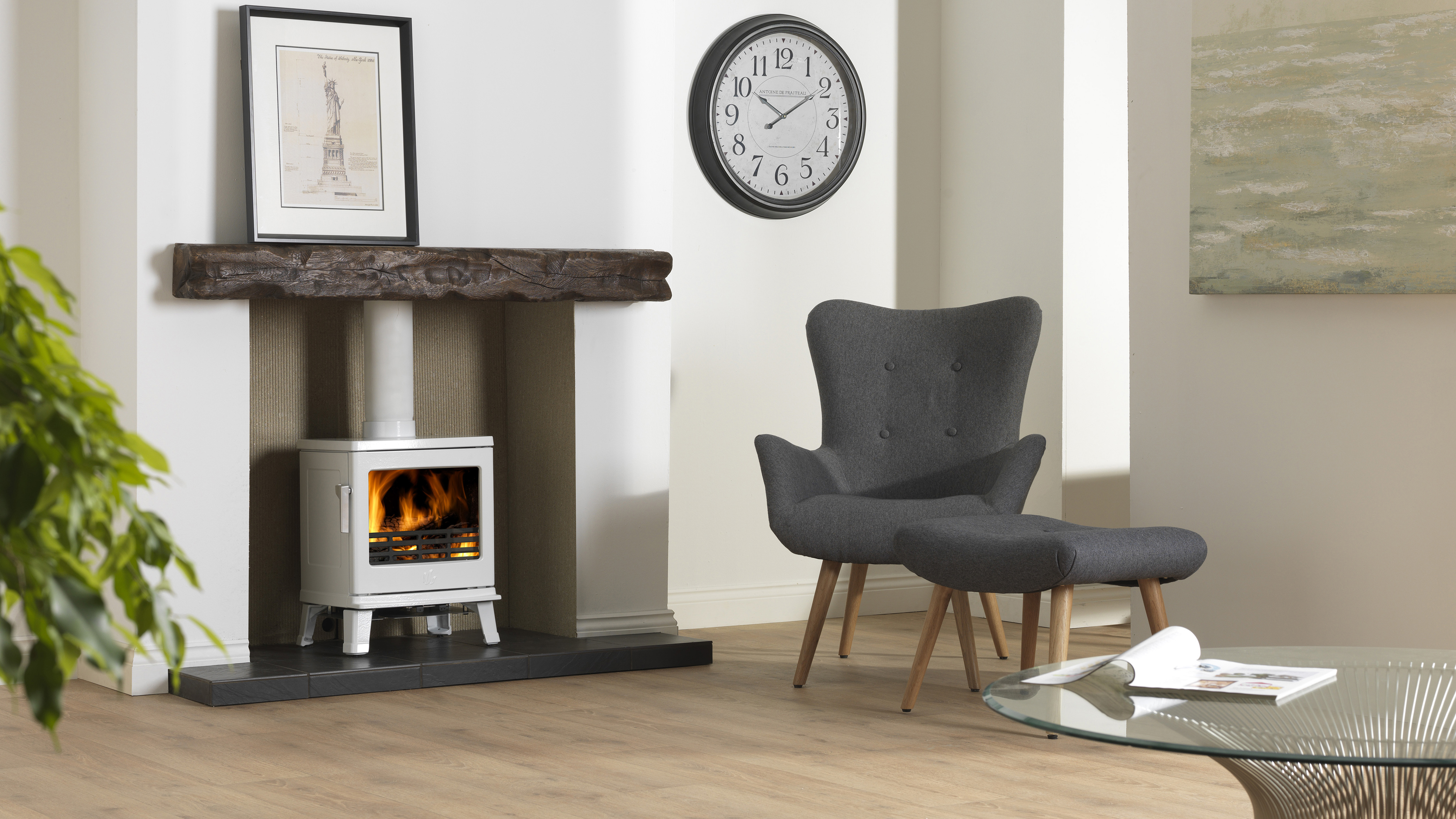How to tile a fireplace – DIY your way to a great new look
Discover how to tile a fireplace. A revamp is easy with these steps and advice from the experts

Learn how to tile a fireplace and you can update a tired surround, or simply give the hearth a fresh new look. With so many tiles in beautiful colors and wonderful shapes to pick from, you can make it a fabulous feature with just a little effort.
And it is a job a keen DIYer can take on. All you’ll need are tiles suitable for the situation along with the materials to fix them, and a few tools. The rewards? Get tiling as well as drawing on the rest of your favorite fireplace ideas, and your room will be both stylish and super cozy.
Use these steps from experienced renovator Sian Astley to discover how to tile a fireplace, and check out the step-by-step videos of Sian tiling her own fireplace, too. We’ve asked other experts to give their advice as well to make your project a success.
How to tile a fireplace: step by step
It’s not hard to tile a fireplace. ‘While tiling a fireplace is a little more complex compared to other house projects, it isn’t really very difficult,’ says Reed Johnson of Jackson Tile Installation. ‘The important thing to consider here is that you plan out the design and layout of your project really well before you even start.’
Use these steps to tile a fireplace surround and hearth.
You will need:
- Your chosen tiles
- A self-levelling compound
- Primer
- Tile cutter
- Adhesive
- Tiler’s trowel
- Grout
- Soft grouting float
- Long spirit level
- Short spirit level
- Blade
- Tile spacers, if needed
- Sponge
- Clean water
- Protective eyewear
- Vacuum cleaner
- Tape measure
- Piece of cardboard
1. Ensure you’ve picked the right tiles
Before you make a start on achieving your fireplace hearth ideas, it’s important to ensure that the tiles you have chosen are suitable for a fireplace. Whether you opt for a patterned encaustic tile, a shaped tile – hexagons are popular at the moment – or something textured, ensure that they are floor tiles able to withstand heat.
Get small space home decor ideas, celeb inspiration, DIY tips and more, straight to your inbox!
2. Measure your fireplace
Accurately measure your fireplace, making note of the halfway point, where your central tile will sit.
3. Lay out your tiles
Working from the central tile outwards, position and style your tiles to ensure that you achieve the desired finish (this will make it easier to lay them eventually) thinking about the composition of different shades and patterns.
Also, take this opportunity to make any necessary cuts to your tiles using a tile cutter, ensuring that they fit the exact measurements of your fireplace.
4. Use an acrylic primer to seal dusty surfaces
After dusting your fireplace, seal with a layer of acrylic primer. This increases the adhesion between the surface and adhesive ensuring that you achieve a high quality finish.
‘The only material that you want to put down behind the tile on a fireplace is acrylic adhesive primer,’ says Volodymyr Barabakh, co-founder and project director of Fortress Home. ‘You want this layer of primer to be around an inch (2.5 cm) thick and evenly spread along the fireplace before you lay down your tiles.’
Wait for it to dry before using a pencil to mark your central line.
5. Spread the adhesive evenly
Prepare your adhesive first, according to the manufacturer’s instructions. Measure a centre line in the fireplace and use a pencil to draw a mark at the front and back of the wall and floor, ensuring the line comes above where the tiles will sit, so you can see it throughout the tiling process.
Start applying the adhesive at the back of the area using a trowel to transfer it from the bucket and spread evenly using a tiler’s trowel to around 1 inch (2 to 3cm) thick. Use the grooved edge of the tiler’s trowel to make ridges in the adhesive, which will help the tiles to stick.
8. Begin tiling
Lay the central tile first and work away from it. Do a small area at a time to ensure accuracy. Place each tile on to the small area prepared with the adhesive, placing tile spacers in between each if the tiles are not already on a mesh background.
Use your spirit levels to continuously check that each tile is level with the next and gently push each tile into the adhesive being careful not to push the adhesive up through the gaps too much.
9. Clean the area
Use a sponge and clean water to gently wash each tiled area as you finish it, waiting a few minutes until the tiles have begun to stick to remove any adhesive on the tile surface. It’s good practice to change the water regularly to ensure it is clean.
10. Continue tiling
Carry on applying the tiles, checking levels and cleaning the surface until the whole area is covered and apply the upstands and skirting tiles last.
11. Check grout lines
When tiling, the adhesive will creep up the grout lines, which can create a speckled finish once the grout is applied. Use a blade to gently prize away any adhesive in the gaps. Wipe down the surface with a sponge and clean water.
12. Prepare for grouting
Once the adhesive has completely dried, remove any leftover residue from the grout lines with a utility knife. Vacuum the area thoroughly before you begin grouting.
13. Begin grouting
Prepare your grout (whether it’s pre-made or powdered) and keep your grouting float at hand – a soft float is essential as it prevents tiles from becoming scratched.
Make sure you press your grout in between the grout lines, starting from the back and moving forwards. Apply liberally, working the grout into a small section at a time. Clean off each section before moving onto the next, but be careful not to over wet as this will cause the dye to bleed.
14. Finishing touches
Once you’ve finished grouting, add an upstand or skirting, if it suits.
How much does it cost to retile a fireplace?
As a rule, retiling a fireplace surround and hearth is not an expensive project. ‘It costs around $20 per square foot (£160 per square metre) to retile a fireplace. This means that a standard fireplace will cost between $150 to $250 (£115 to £190),’ says Volodymyr Barabakh.
However, ultimately it depends on which material you use. ‘Calculate the area (square foot (or square metre) covered) and estimate how many tiles you’ll be needing to cover it,’ says Reed Johnson. ‘An important tip: it would be wise to add another 10 to 15 per cent to your tiling budget. This will serve as a spare for small tile cuts that you’ll be needing along the process. There will be cases where parts of tile you cut small pieces from may no longer be usable.’
Can you lay tile over a brick fireplace?
You can transform a brick fireplace with tile, as long as the brick is in good condition. ‘All you just need to make sure is that the bricks are cleaned, scrubbed, and smooth well before you lay your new tiles so you won’t have issues with adhesions and leveling,’ says Reed Johnson.
Volodymyr Barabakh advises: ‘You just need to be extra careful when priming the area due to the porous surface of bricks. You may want to lay an extra half an inch (1 cm) of primer to accommodate this.’
Laura Crombie is a journalist and TV presenter. She has written about homes and interiors for the last 17 years and was Editor of Real Homes before taking on her current position as Content Director for Country Homes & Interiors, 25 Beautiful Homes Period Living and Style at Home. She's an experienced home renovator and is currently DIY-renovating a 1960s house in Worcestershire. She's been quoted on home design and renovating in The Times, The Guardian, The Metro and more. She's also a TV presenter for QVC and has been a commentator for Channel 4 at Crufts dog show.


